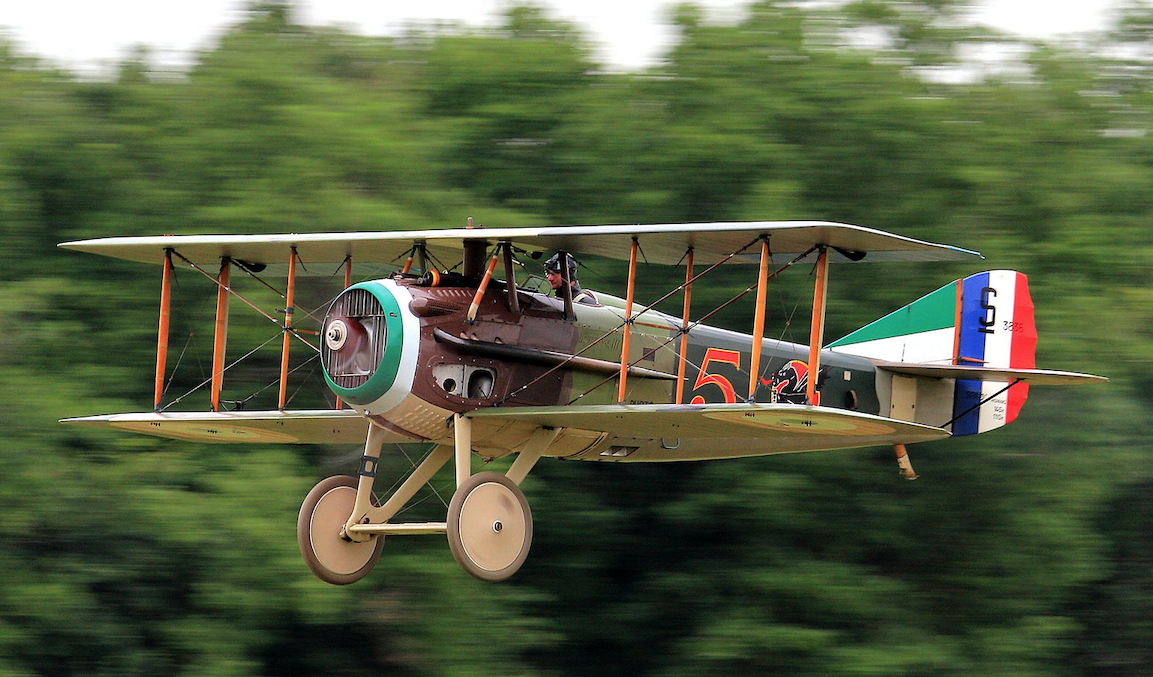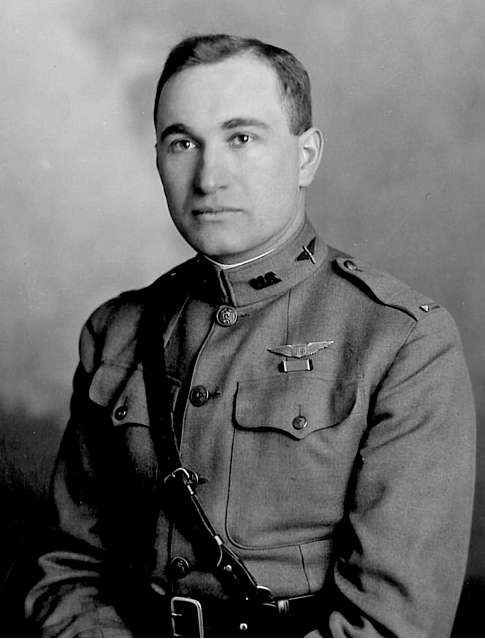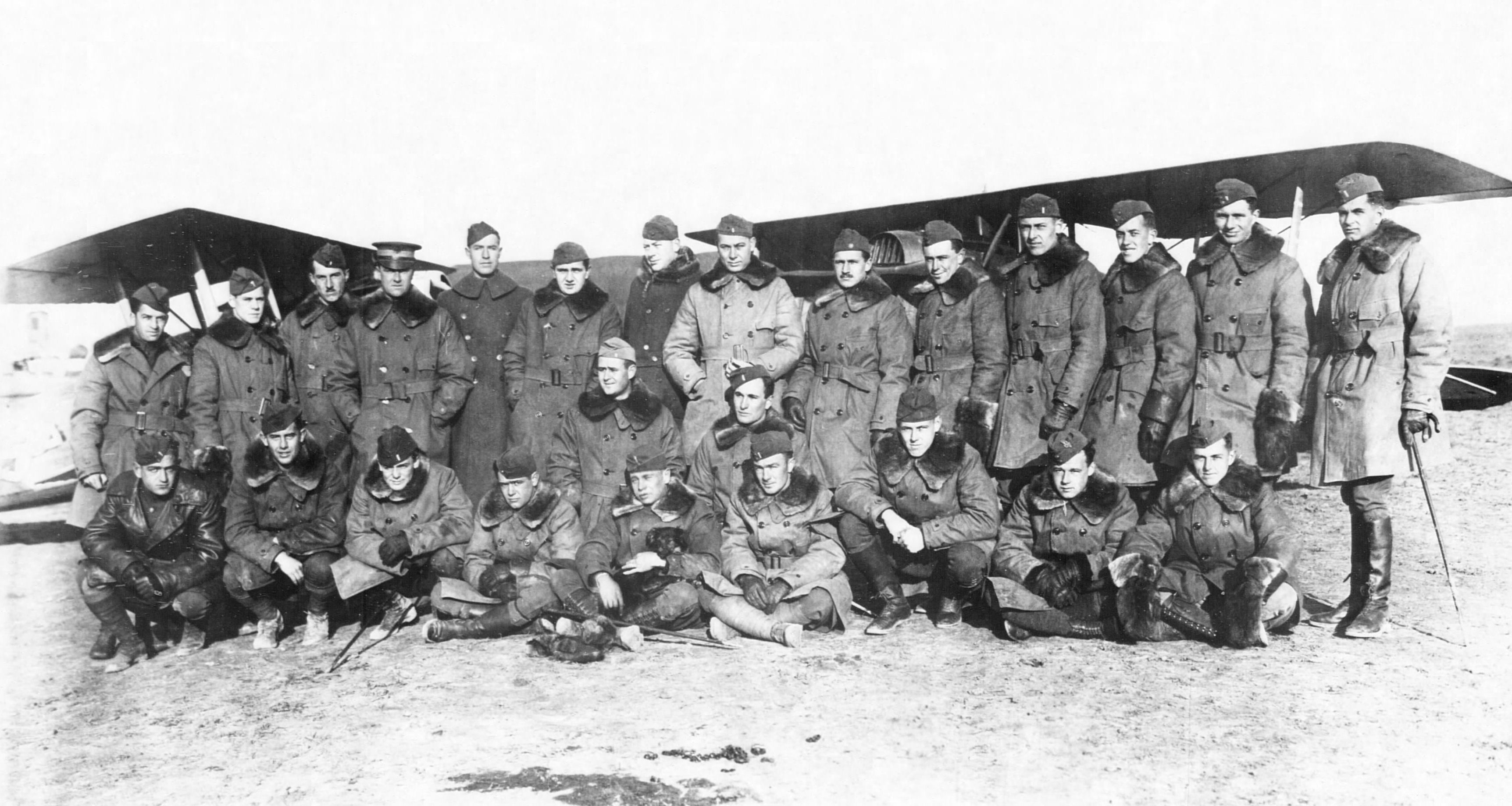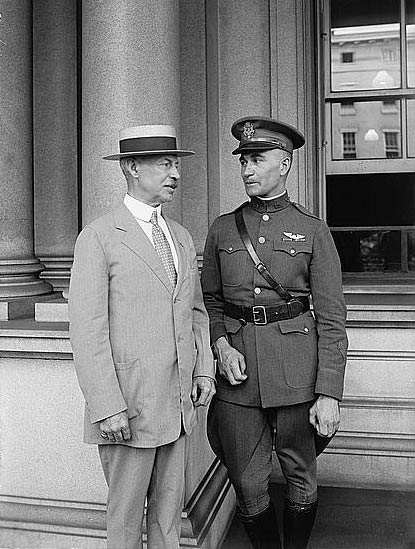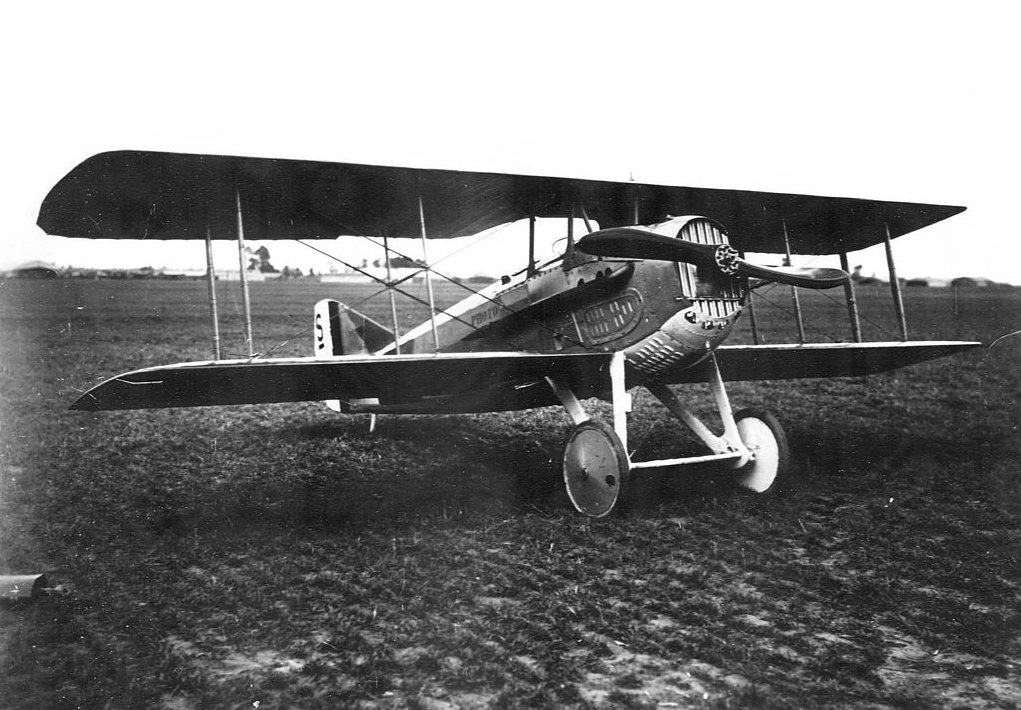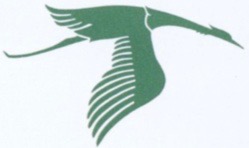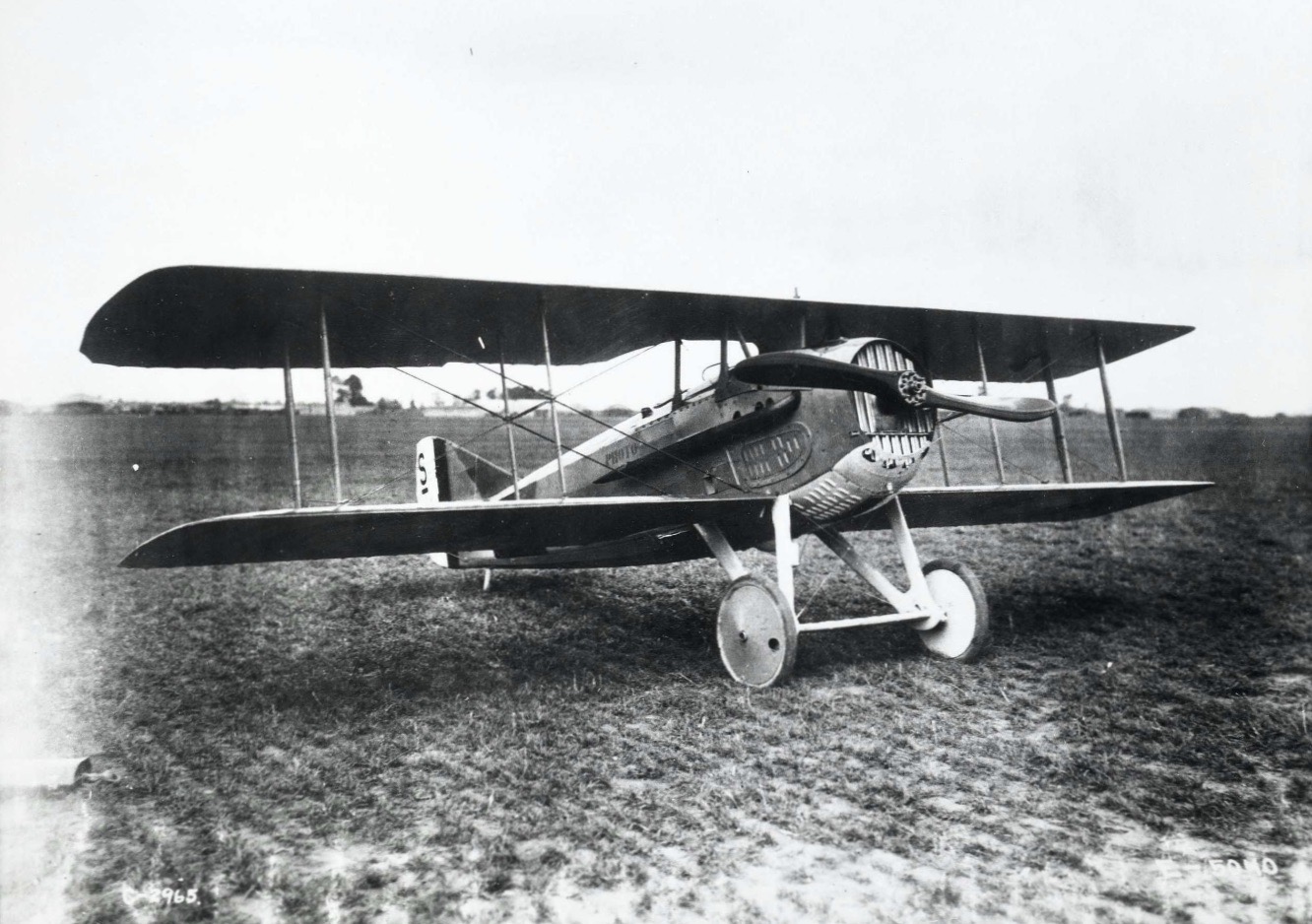
27 April 1921: Louis G. Meister, Chief Test Pilot, McCook Field, completes his report on the flight tests of the Société Pour L’Aviation et ses Dérivés SPAD S.XIII C.1, best known, simply, as the “Spad.”
The SPAD S.XIII C.1 was a single-seat, single-engine, two-bay biplane constructed of a wooden framework with a doped fabric covering. Sheet metal covered the engine and cockpit. Designed by Société Pour L’Aviation et ses Dérivés Technical Director Louis Béchéreau and manufactured by SPAD as well as eight other companies,² this was an improved and slightly larger version of the earlier SPAD S.VII C.1. It used a more powerful Hispano-Suiza 8Ba engine instead of the S.VII’s 8Aa, with an increase of 50 horsepower. (Later versions used 8Be engines.) Armament was increased from a single .303-caliber Vickers machine gun to two.
The S.XIII was first flown by René Pierre Marie Dorme, 4 April 1917.
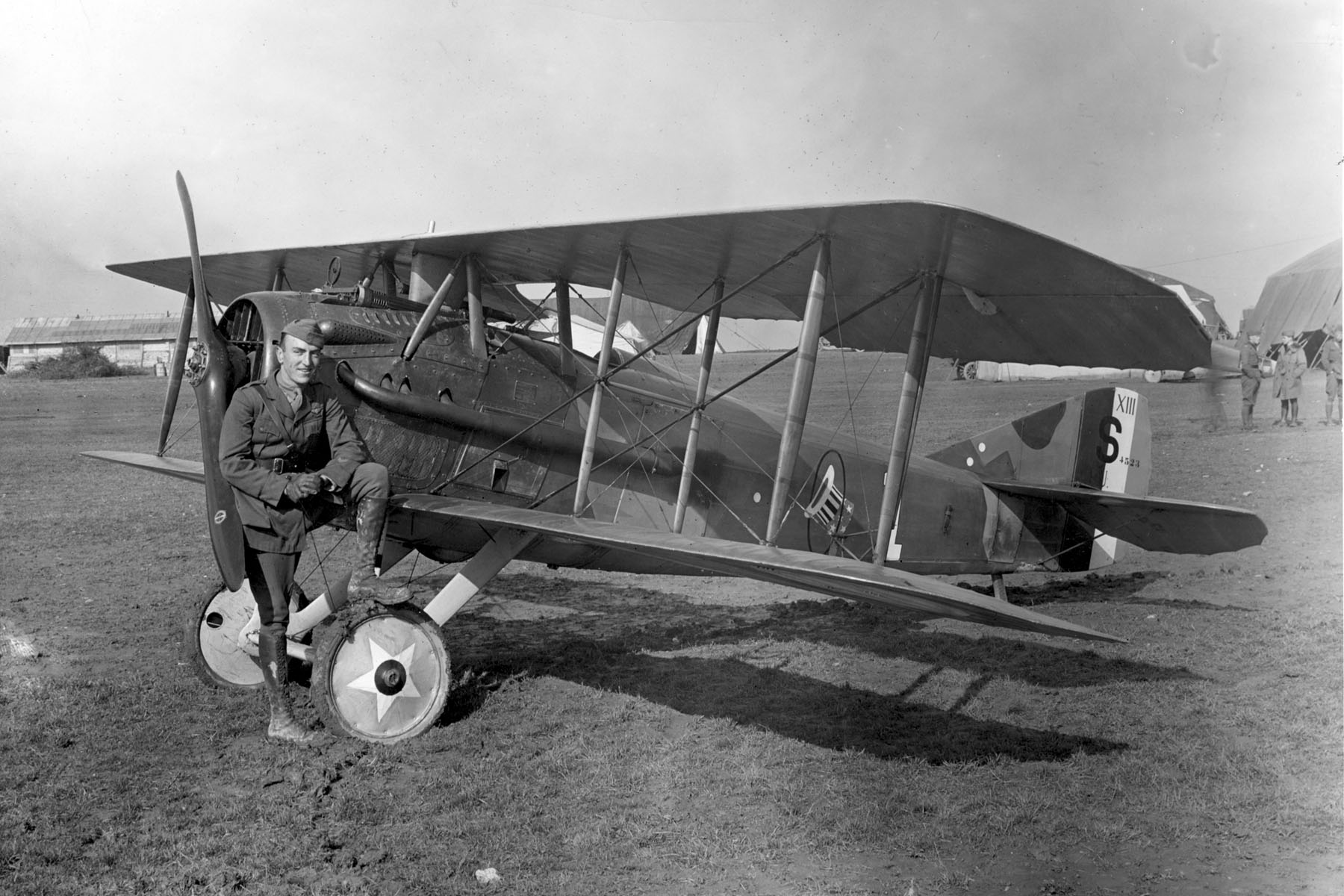
The McCook Field test aircraft, designated P-154, was built by Société Pour L’Aviation et ses Dérivés. Its manufacturer’s serial number was 17956, and it was designated A.S. 94101 by the U.S. Air Service. It was surveyed 14 January 1924.
The SPAD was faster than other airplanes of the time and it had a good rate of climb. Though a product of France, it was used by both the Royal Flying Corps and the U.S. Army Air Service. In France, the airplane type now considered a “fighter” was called a chasseur (“hunter”). The letter “C-” in the SPAD’s designation reflects this. The “-.1” at the ending indicates a single-place aircraft.
PILOT’S OBSERVATIONS ON SPAD 13
This airplane taxies very easily even in high wind, and has no tendency to turn in either direction on the ground. It should be taxied with the control stick held forward to lessen the weight on the tail skid. The tail skid is too straight and has broken on two different occasions while taxying over rough ground.
It is a difficult airplane to take-off because of a tendency to swing to the right immediately upon opening the throttle, and if given left rudder too fast will swing to the left. In order to make a good fast take-off it is necessary to push the control stick slightly forward to raise the tail from the ground. This feature is noticeable after having flown other pursuit plane of approximately the same power.
In flight the airplane is very steady, but requires a good deal of left rudder, as the engine torque is very pronounced. It is tail heavy flying level, and also climbing with wide-open throttle, but this tail heaviness is not so pronounced above 15,000 feet.
The cockpit is very roomy, although the rudder bar is too close to the pilot and tires the legs in a long flight. It is a very warm and comfortable airplane to fly at altitude or on cold days, but not on warm days or low flying with wide-open throttle, such as contact patrol.
The airplane maneuvers easily and shows no tendency to spin in very tight banks. The visibility is good to either side and above the top wing, but is blind straight ahead and below.
The constant noise of the geared engine is very annoying and at altitudes above 16,000 feet the engine operates badly. The engine is very susceptible to temperature changes in a glide and cools quickly, so the pilot must control his shutters constantly in changing altitude.
The engine is not very accessible for maintenance, and the installation could be improved.
This airplane lands easily, shows no tendency to turn on the ground, and stops short owing to the heavy tail. Even when landed tail high or on a rough field it does not show any tendency to nose over.
Louis G. Meister,
Test Pilot.
—AIR SERVICE INFORMATION CIRCULAR, Vol. III, No. 286, October 1, 1921, Page 3
The S.XIII was 20 feet, 4 inches (6.198 meters) long.¹ The upper and lower wings had equal span and chord. The span was 26 feet, 3¾ inches (8.020 meters) and chord, 4 feet, 7-1/8 inches (1.400 meters). The vertical spacing between the wings was 3 feet, 10½ inches (1.181 meters), and the lower wing was staggered 1¼° behind the upper. Interplane struts and wire bracing were used to reinforce the wings. The wings had no sweep or dihedral. The angle of incidence of the upper wing was 1½° and, of the lower, 1°. Only the upper wing was equipped with ailerons. Their span was 7 feet, 3½ inches (2.222 meters), and their chord, 1 foot, 7½ inches (0.495 meters). The total wing area was 227 square feet (21.089 square meters).
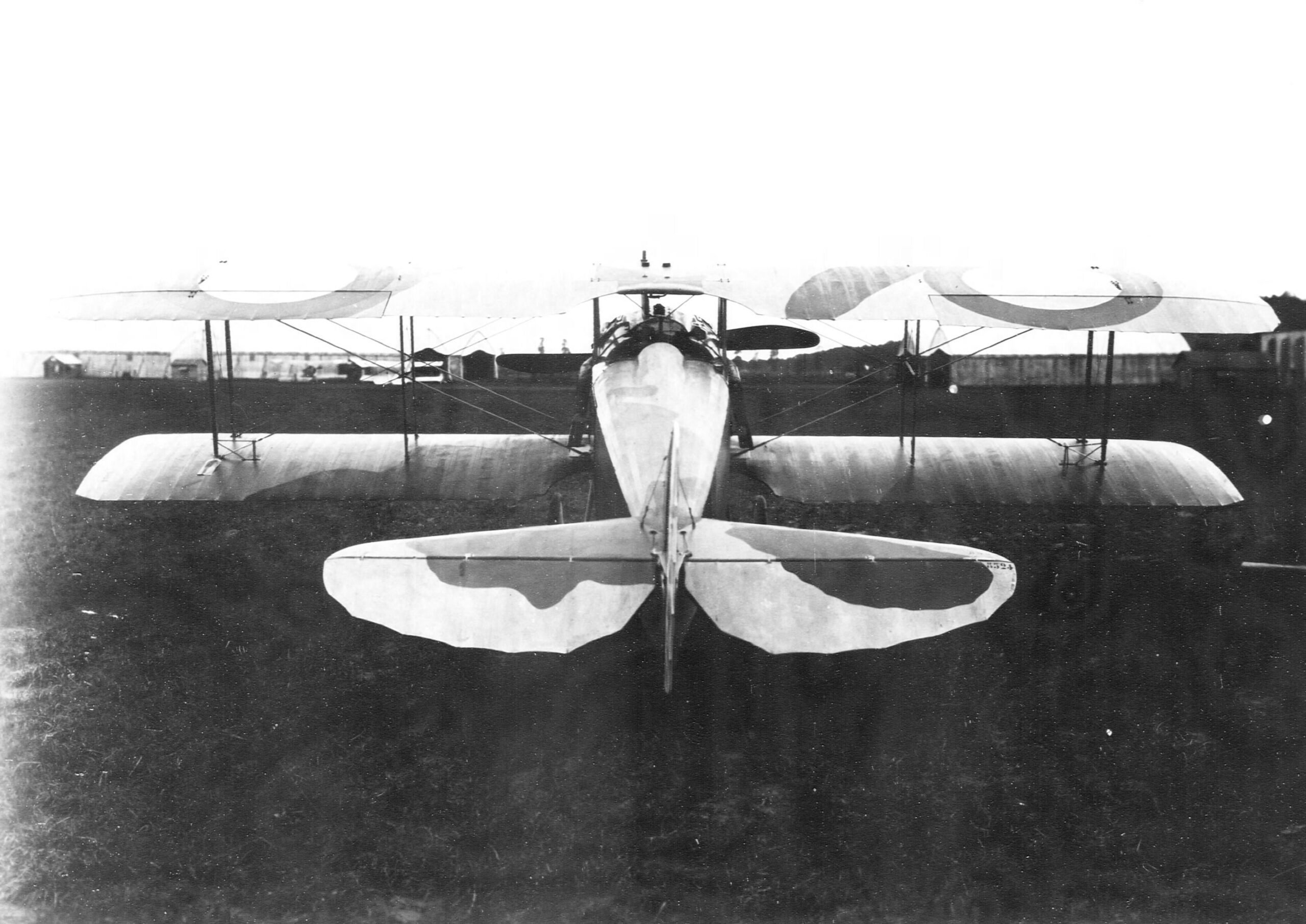
The horizontal stabilizer had a span of 10 feet, 2 inches (3.099 meters) with a maximum chord of 1 foot, 8¾ inches (0.527 meters). The height of the vertical fin was 2 feet, 7/8-inch (0.876 meters) and it had a maximum length of 3 feet, 11¼ inches (1.200 meters). The rudder was 3 feet, 10-5/8 inches high (1.184 meters) with a maximum chord of 2 feet, 2 inches (0.660 meters).
The SPAD S.XIII C.1 had fixed landing gear with two pneumatic tires. Rubber cords (bungie cords) were used for shock absorption. The wheel track was 4 feet, 10¾ inches (1.492 meters). At the tail was a fixed skid.
The airplane had an empty weight of 1,464 pounds (664 kilograms), and gross weight 2,036 pounds (924 kilograms).
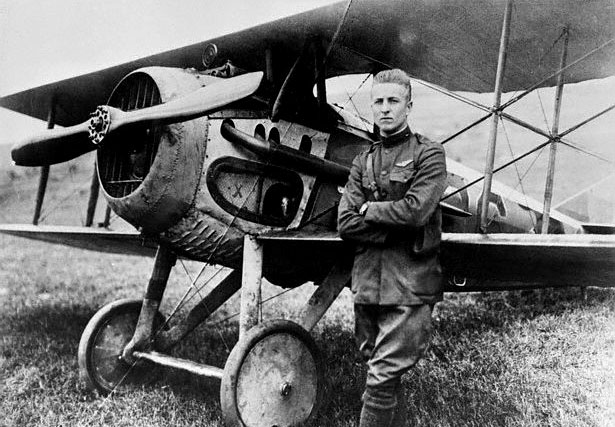
Initial production SPAD XIIIs were powered by a water-cooled, 11.762 liter (717.769-cubic-inch displacement), La Société Hispano-Suiza 8Ba single overhead cam (SOHC) left-hand-tractor 90° V-8 engine. It was equipped with two Zenith down-draft carburetors and had a compression ratio of 5.3:1. The 8Ba was rated at 150 cheval vapeur (148 horsepower) at 1,700 r.p.m., and 200 cheval vapeur (197 horsepower) at 2,300 r.p.m. It drove a two-bladed, fixed-pitch, wooden propeller with a diameter of 2.50 meters (8 feet, 2.43 inches) through a 0.585:1 gear reduction. (The 8Be engine had a 0.75:1 reduction gear ratio and used both 2.50 meter and 2.55 meter (8 feet, 4.40 inches) propellers.) The Hispano-Suiza 8Ba was 1.36 meters (4 feet, 5.5 inches) long, 0.86 meters (2 feet, 9.9 inches) wide and 0.90 meters (2 feet, 11.4 inches) high. It weighed 236 kilograms (520 pounds).
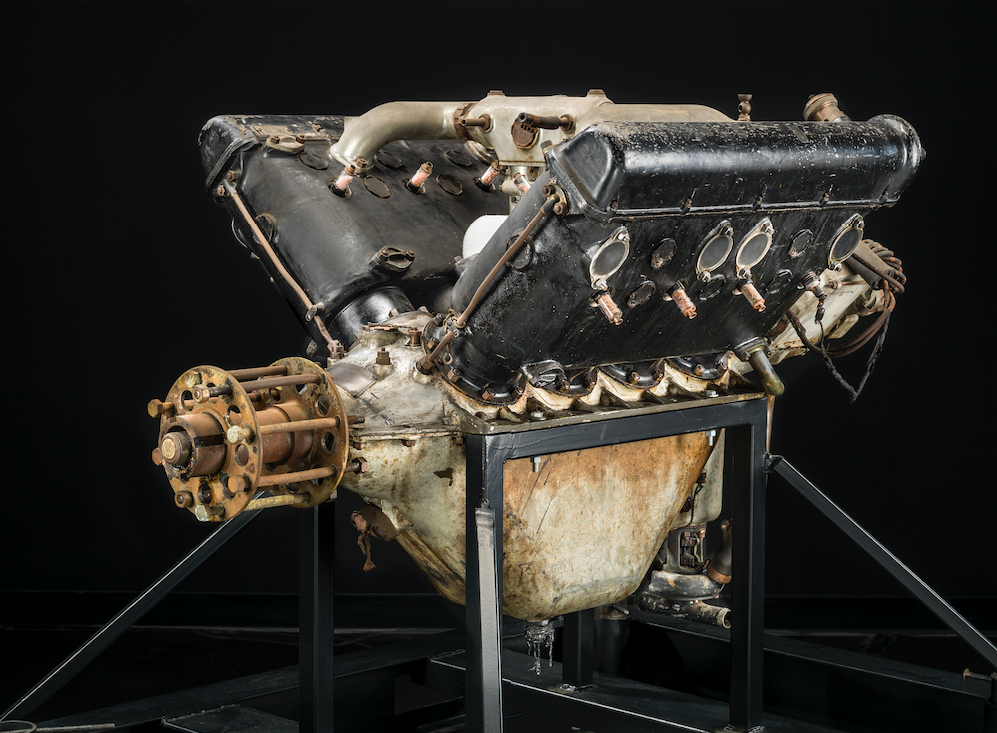
The airplane had a main fuel tank behind the engine, with a gravity tank located in the upper wing. The total fuel capacity was 183 pounds (83 kilograms), sufficient for 2 hours, 30 minutes endurance at full throttle at 10,000 feet (3,048 meters), including climb. There was also a 4.5 gallon (17 liters) lubricating oil tank.
The SPAD S.XIII had a maximum speed of 131.5 miles per hour (213 kilometers per hour) at 6,500 feet (1,981 meters), with the engine turning 2,040 r.p.m., and a service ceiling of 18,400 feet (5,608 meters). The airplane could climb to 6,500 feet in 6.5 minutes, to 15,000 feet (4,572 meters) in 23 minutes, and to the service ceiling in 42.5 minutes. Its absolute ceiling was 20,000 feet. The SPAD’s minimum speed at Sea Level was 65 miles per hour (105 kilometers per hour), and landing speed was 59 miles per hour (95 kilometers per hour).
The chasseur was armed with two fixed, water-cooled, .303-caliber (7.7 mm) Vickers Mk.I machine guns with 400 rounds of ammunition per gun, synchronized to fire forward through the propeller arc. Because of the cold temperatures at altitude, the guns’ water jackets were not filled, thereby saving considerable weight.
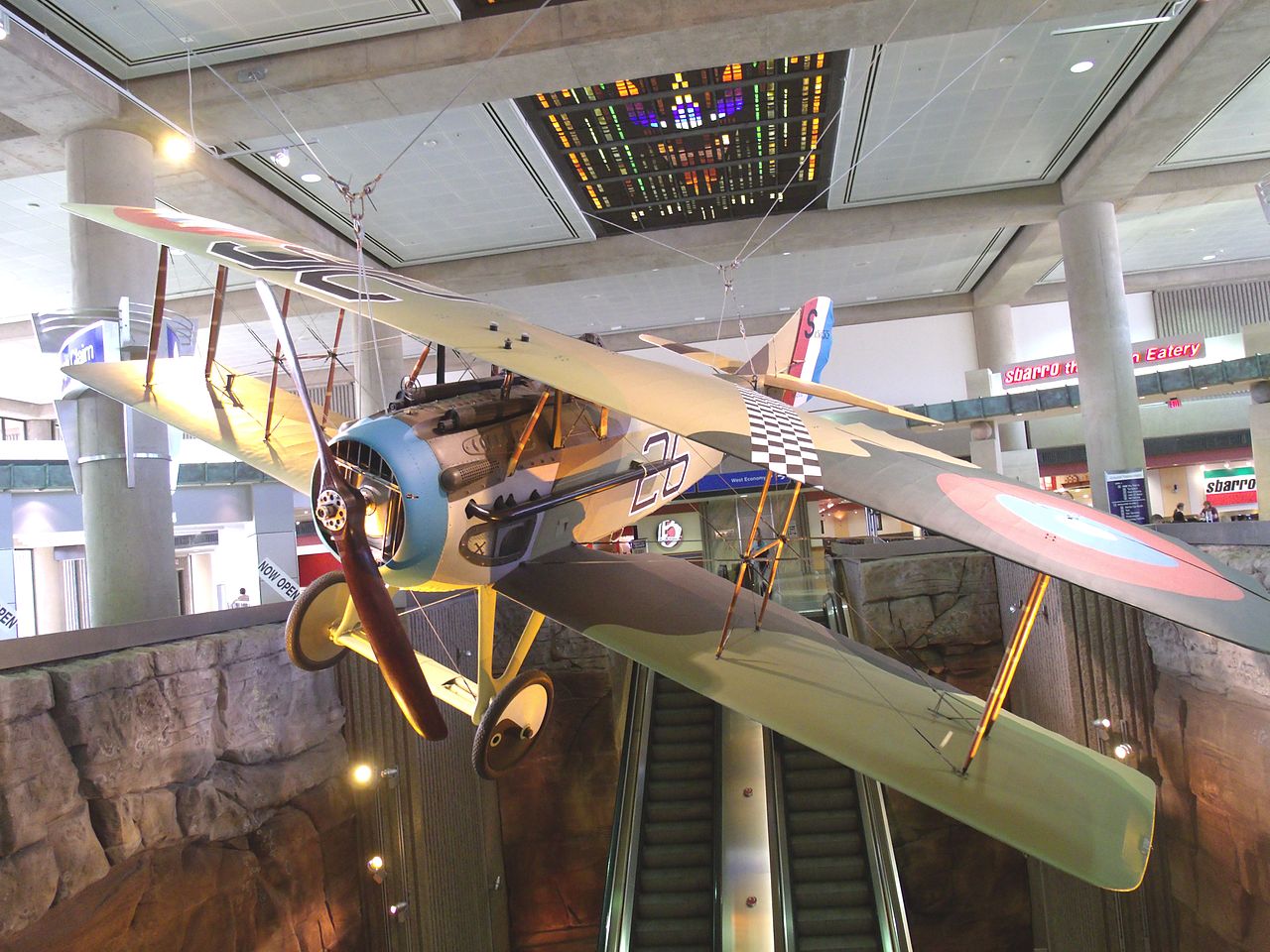
A NASA publication reported: “. . .the SPAD XIII had the most favorable power loading of any of the aircraft considered and a high (for its day) wing loading. These characteristics coupled with a relatively low zero-lift drag coefficient and low drag area gave the SPAD the highest speed of any of the aircraft listed in the table. As shown by the data in figure 2.18, the climb characteristics of the SPAD were bettered only by three of the Fokker aircraft.”
—Quest for Performance: The Evolution of Modern Aircraft, by Laurence K. Loftin, NASA Scientific and Technical Information Branch, 1985, at Chapter 2, Page 32
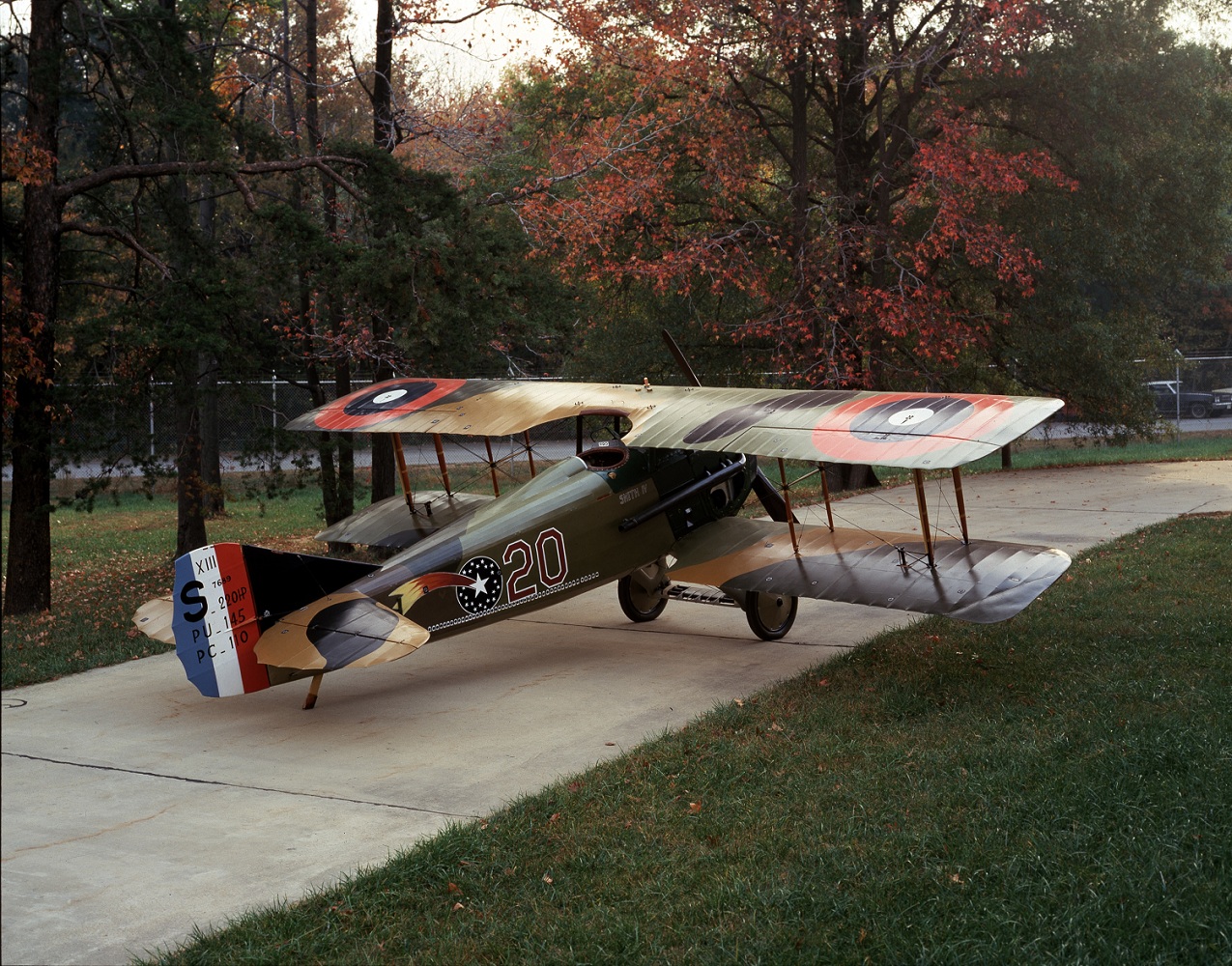
¹ Dimensions, weights, capacities and performance data cited above refer to SPAD S.XIII C.1 serial number 17956 (A.S. 94101), which was tested at McCook Field, Dayton, Ohio (Project Number P-154), 1921.
² Including Société Pour L’Aviation et ses Dérivés; Société des Avions Bernard; Kellner et ses Fils; The Blériot and SPAD Manufacturing Company, Ltd., at Addlestone, Surrey, England; Mann Egerton & Company, Ltd., Norwich, England; and Curtiss Aeroplane and Motor Company’s Elmwood plant at Buffalo, New York, U.S.A.
© 2022, Bryan R. Swopes
